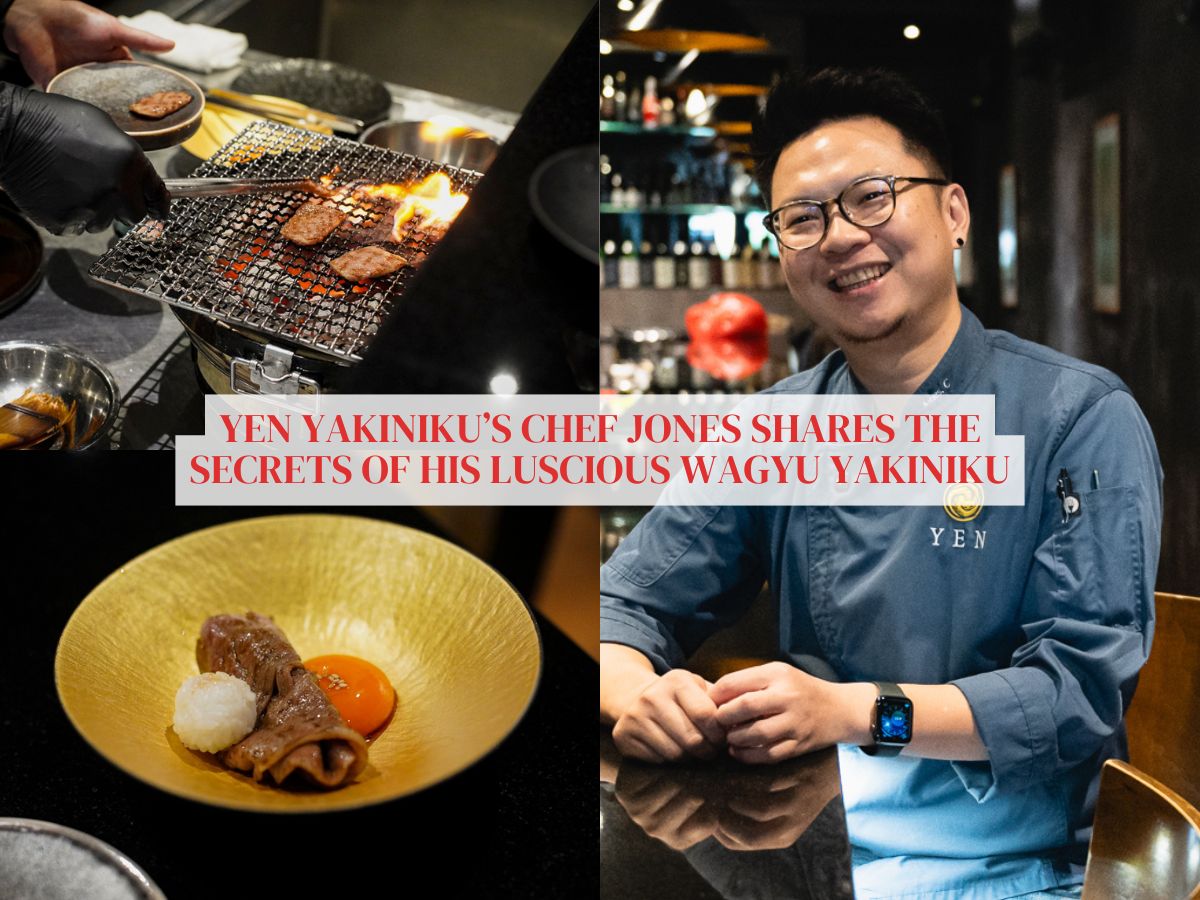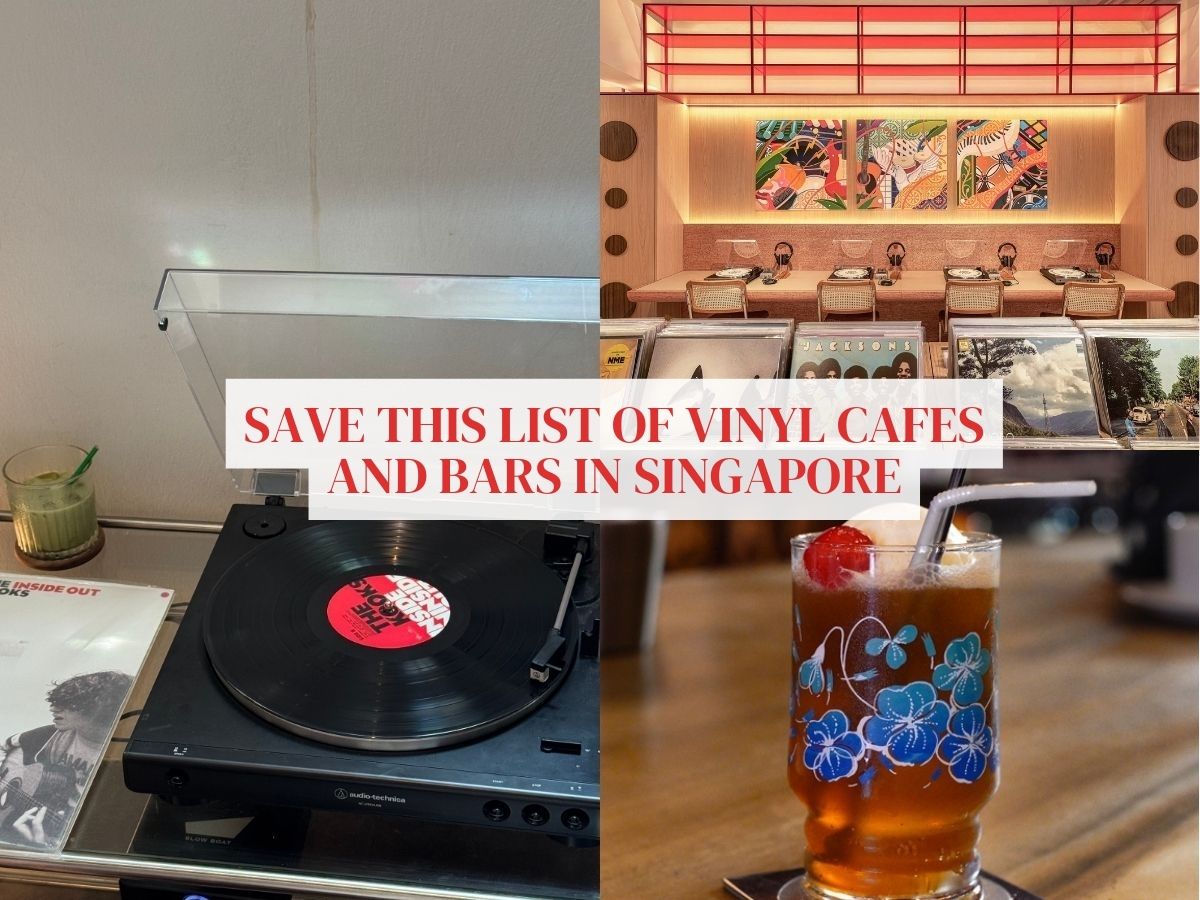Yen Yakiniku: How chef-owner Jones Chen grills the most luscious wagyu beef yakiniku
This is the third and final instalment of a three-part series on unique Japanese offerings in Singapore, in collaboration with GrabFood 5-Star Eats. Check out our stories on Man Man Unagi and Hajime Tonkotsu & Ramen.
Are you constantly on the hunt for the best food? Well, GrabFood is making it easier for foodies in Singapore with its newly launched GrabFood 5-Star Eats collection!
The newly launched collection showcases the best eats in Singapore from a wide variety of cuisines, comprising the platform’s top-rated restaurants as well as recommendations from the Michelin Guide and HungryGoWhere.
Curious about what goes into making these quality specialty dishes? We check out what goes behind the scenes of three well-respected Japanese brands, to show you the magic behind them.
Yakiniku at Yen Yakiniku
Yakiniku in Singapore is more commonly appreciated as a fast-casual experience nowadays, with an abundance of yakiniku chains providing an affordable DIY alternative.
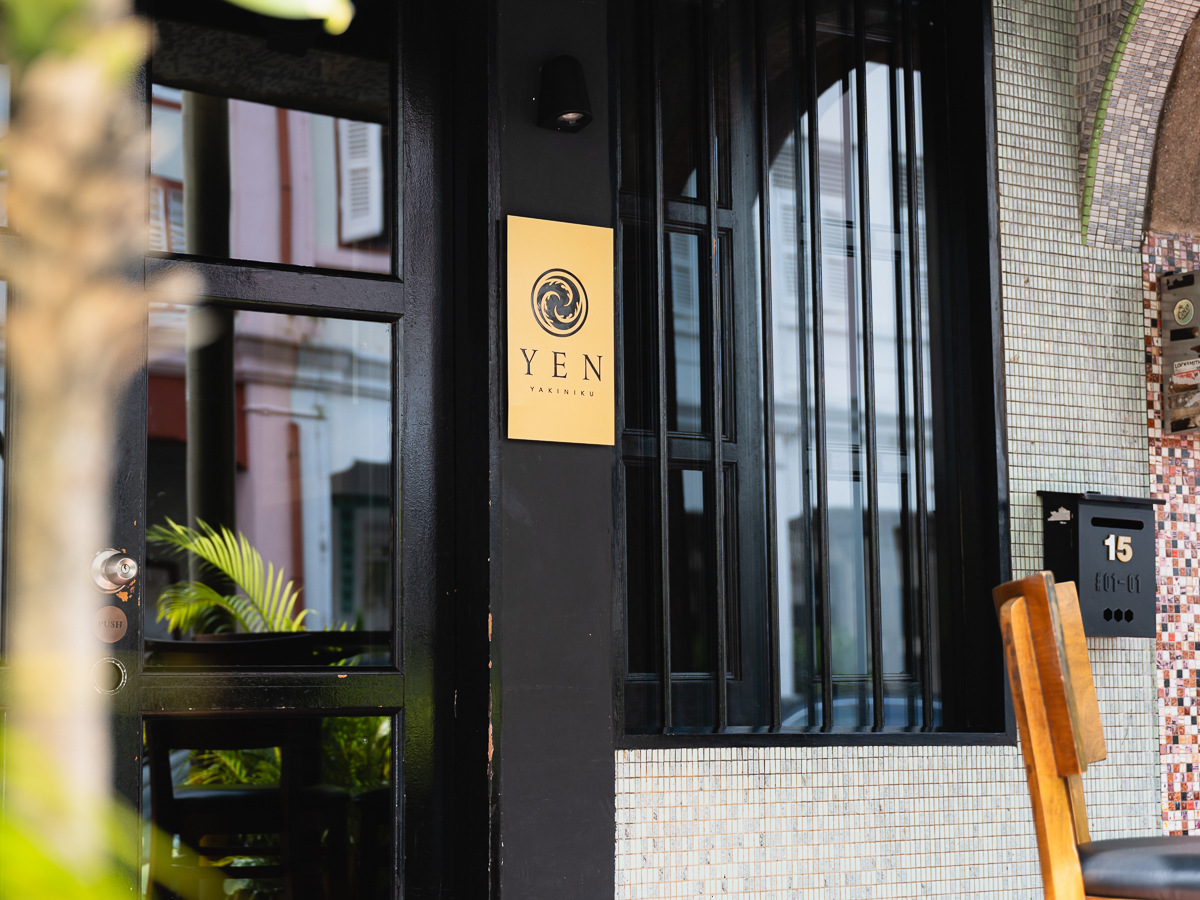
But there is a lot more to this Japanese speciality than meets the eye. Yakiniku is not just about putting slices of meat on a grill and hoping it doesn’t come out charred and burnt.
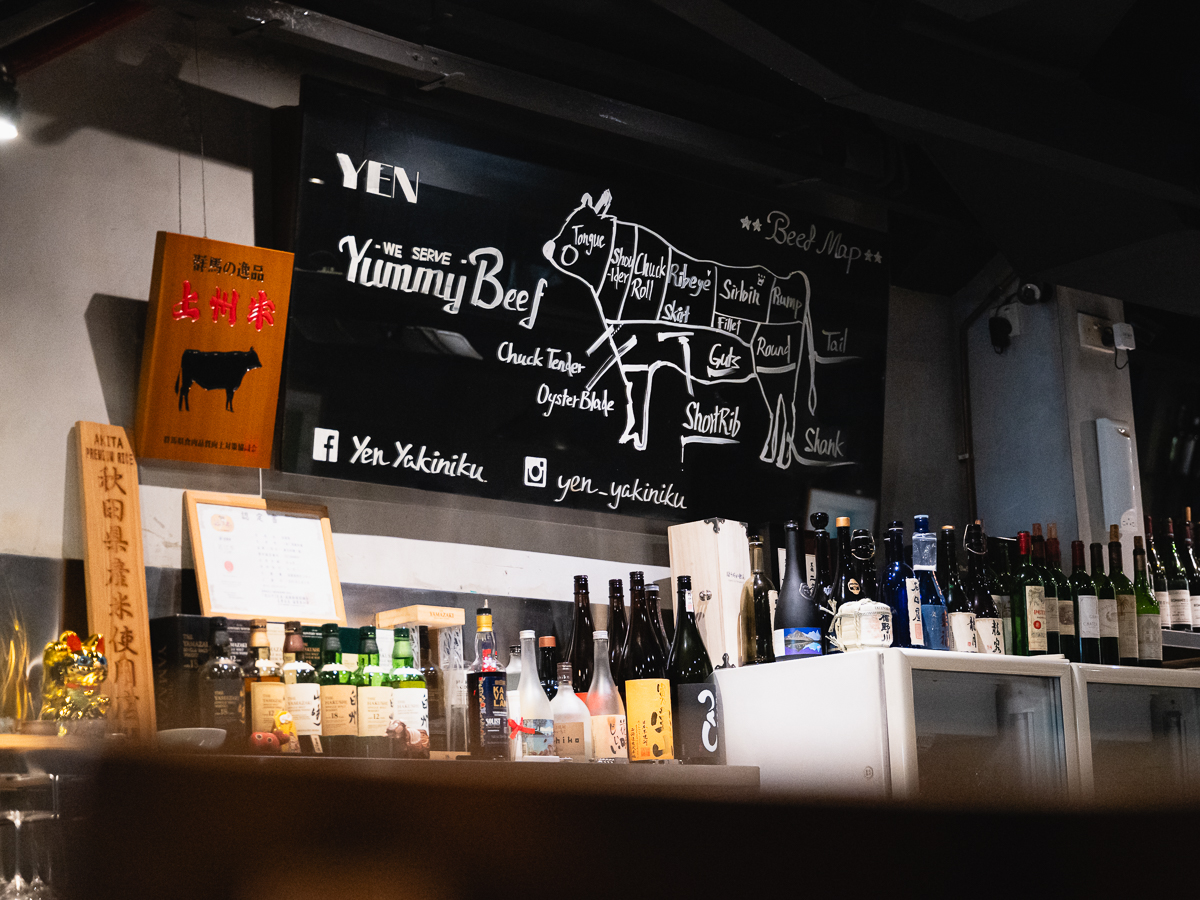
That’s why stalwarts such as Yen Yakiniku make it a point to serve customers the best quality meat that’s grilled to perfection.
The Ann Siang Hill restaurant has been around for a decade and is focused on all the minute details and showcases the beauty of Japanese-style grilled meat, which is usually not heavily seasoned or marinated.
To achieve the perfect yakiniku experience, all the meat at Yen Yakiniku is carefully grilled in front of the customers in an upscale, 20-seater bar-style space.
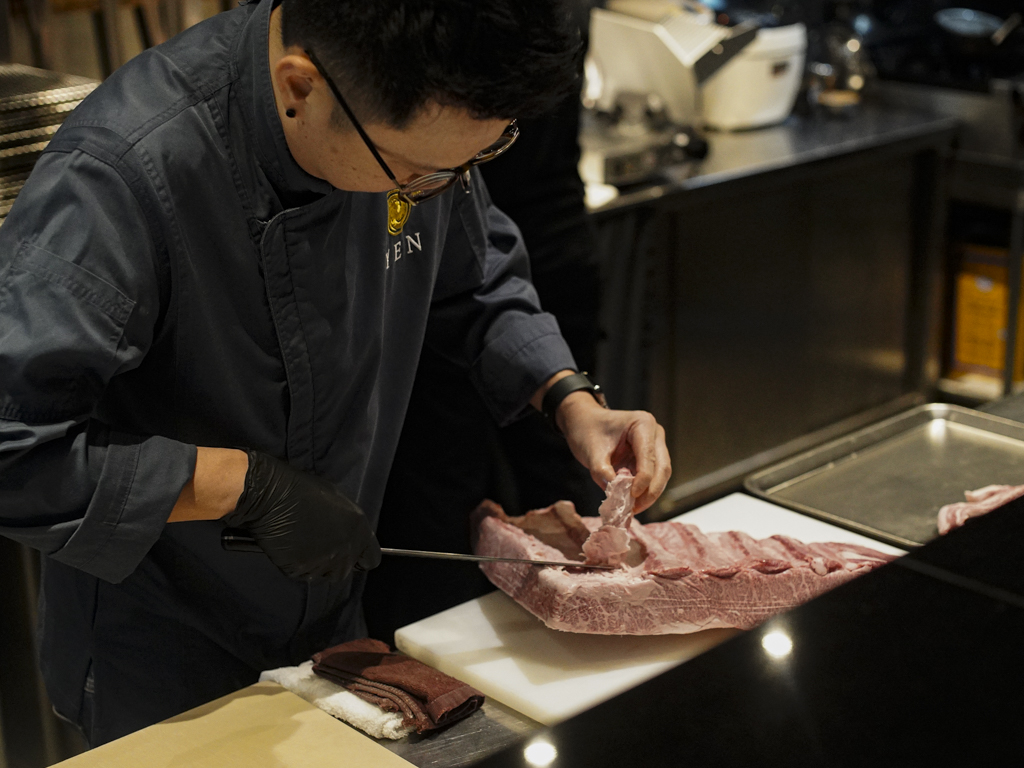
Diners are given the utmost attention here. Yen ensures there’s more than enough manpower to go around, so that the staff can ensure that the meat is never left unattended.
The team even says that there have been times they’ve turned away guests when there weren’t enough staff.
Besides the service, the restaurant also puts great effort in the sourcing of quality wagyu beef, while also meticulously butchers its beef to provide the best quality cuts possible.
How does Yen Yakiniku ensure consistently great yakiniku? We let the owner tell us!
Chef Jones Chen’s yakiniku story
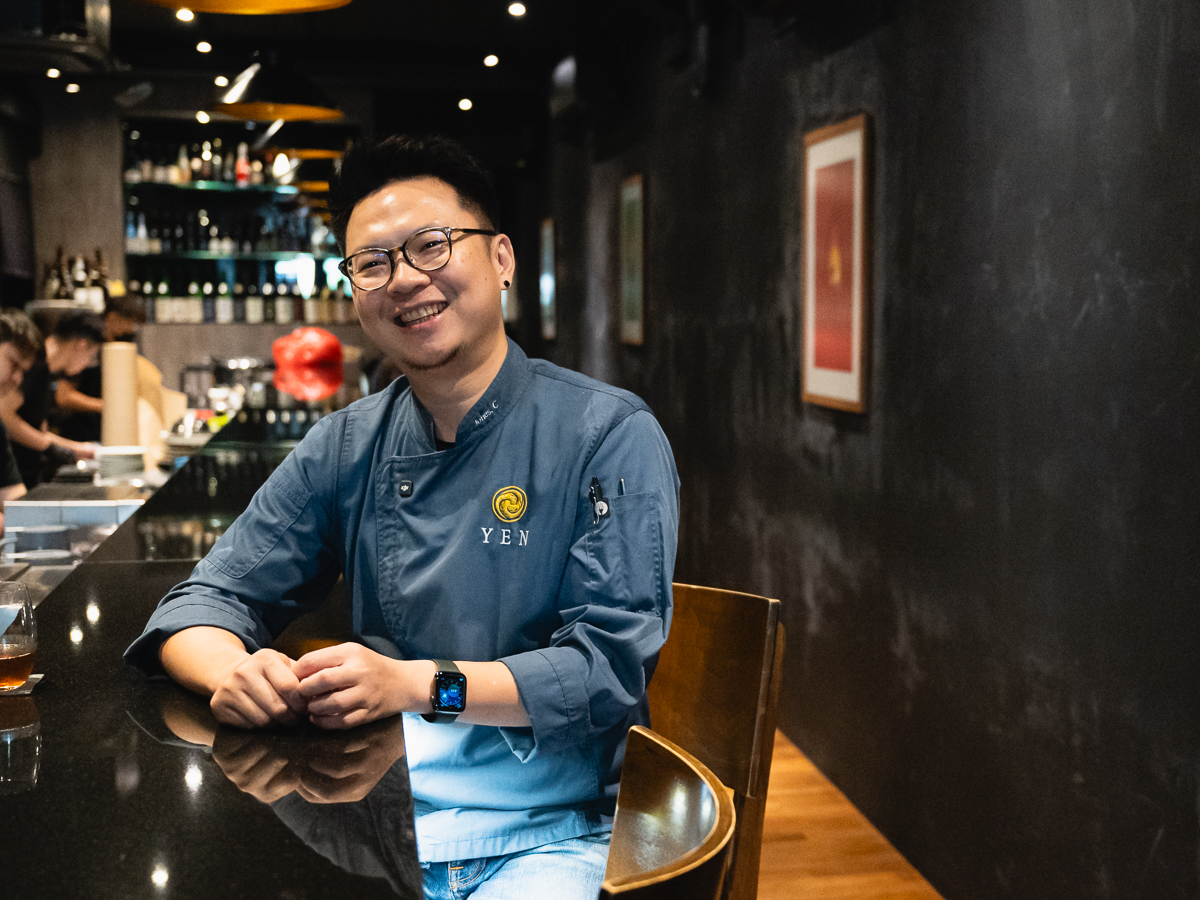
Hailing from Taiwan, 43-year-old chef-owner Jones Chen hadn’t always planned to be a chef and didn’t have formal culinary training.
Prior to entering the restaurant industry, his background was in mechanical engineering. He even worked in wine sales for a while, before officially venturing into the kitchen as a career.
His F&B life started at Da-Wan Yakiniku, a lauded restaurant in Taipei that was awarded one Michelin star for four consecutive years from 2018, when the Michelin Guide first debuted in Taipei.
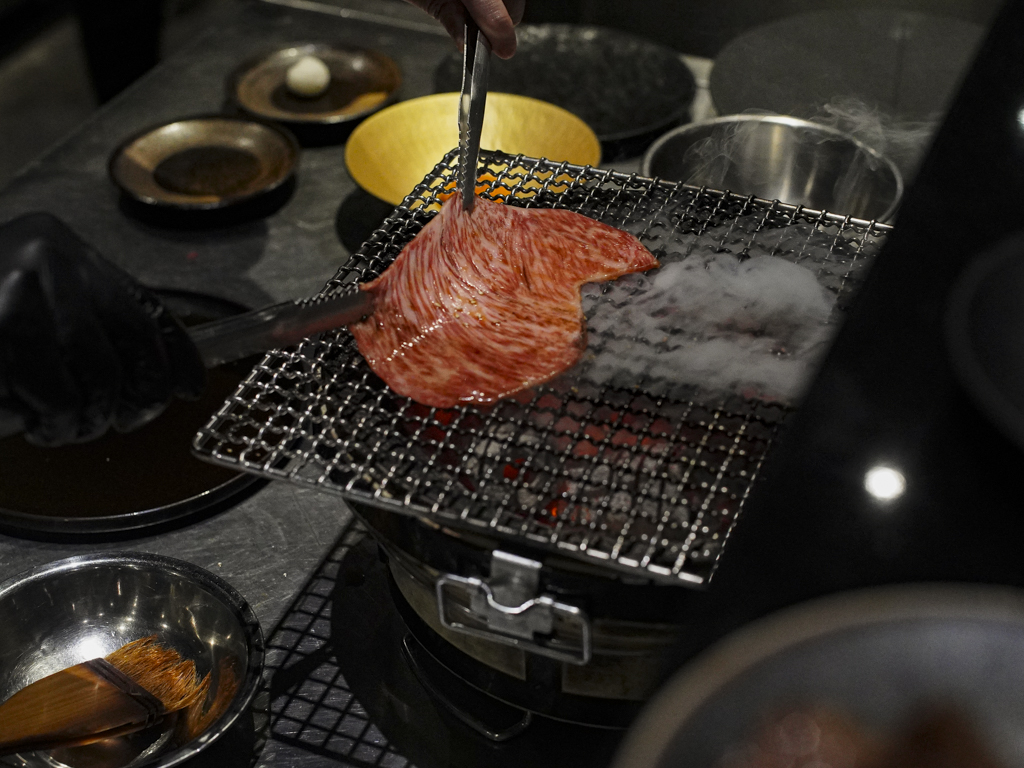
When he started as an apprentice, he mainly washed dishes, before the seniors eventually decided to impart their yakiniku know-how to the aspiring Jones.
Since the owners learnt their craft from Japan, even the kitchen environment was very authentically Japanese — there is an emphasis on detail and technical perfection, sometimes requiring long periods of time to pick up just one skill.
The experience fostered a love for meat in him: “After spending seven to eight years there, I grew to become very interested in meat. Even today, I still feel like visiting other yakiniku restaurants and I go to Japan every year!”
Since then, he has been devoted to the Japanese speciality of yakiniku — he worked there in Da-Wan for another eight years before he moved to Singapore to open Yen Yakiniku in 2015.

Why the name Yen?
Says Jones: “The name ‘yen’ actually stands for ‘焱’, the Chinese word for flame. It’s meant to symbolise passion and warmth towards customers, since we are a more intimate bar concept and it’s important to make customers feel at home!”
“One thing that sets us apart from other restaurants is our service, since we are more of a bar concept than a table-service restaurant. Our motto is ‘you chill, we grill’,” he adds.
After a decade, he still insists on sticking to his passions and beliefs, insisting on running Yen Yakiniku, according to his own vision.
He says: “Singapore’s F&B scene is extremely competitive, especially in the casual-dining price range. If you don’t do it well enough, customers have their pick of alternatives. That’s why I stick to my style.”
What goes into making juicy yakiniku

How did yakiniku come about, exactly? Interestingly, it has its roots from the ever-popular Korean barbecue.
“Yakiniku actually originated from Korea, but it eventually spread to Japan as people migrated in the 20th century. Yakiniku culture then started developing in Osaka and the Japanese specialty, in turn, started to gain popularity after the 1960s,” he says.
One of the reasons it’s such a new development is also because of Japan’s Buddhist heritage — eating beef was only legalised as recently as the 1870s.
But even for a relatively young form of cooking, there is an overwhelming amount of intricacies that chefs have to master.

It starts from sourcing, according to Jones: “We tried meats from suppliers all over Singapore before we decided on which ones suit us the most. Even for scallops, we tried samples from all the suppliers!”
They focus on Japanese beef — though they do also use cuts from other origins — and interestingly, Jones confessed that nowadays, he prefers to feature A4 over the more “luxe” A5, since A5 can be a bit too fatty.
Next on the list is the butchering: “Knifework is one of the most important aspects in Japanese cuisine and it’s also particularly important in yakiniku.”
“Some people think yakiniku is simple and just using good meat would get you amazing results, but that’s not true,” says Jones.
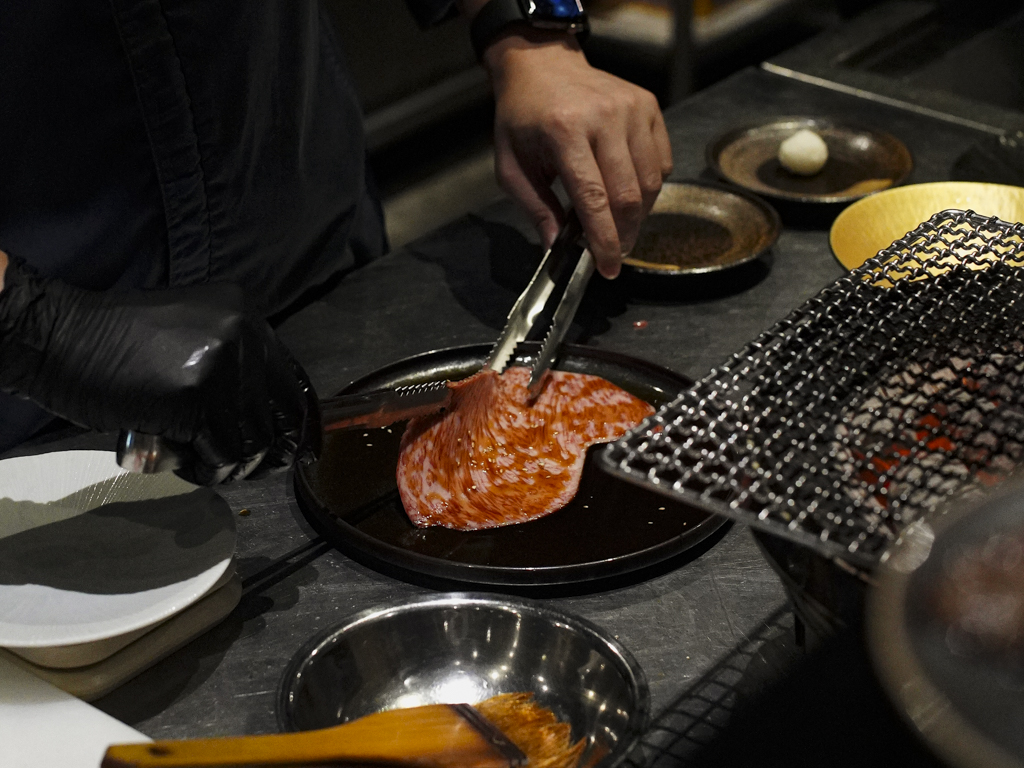
It’s particularly necessary for certain cuts: “We have interesting cuts, such as the intercostal — this refers to the muscle between the ribs — and the technique is important to properly cut and trim cuts like that.”
After that, they will decide whether any sauce or marinade is necessary, but it depends on the cut and is usually done simply.
Everything culminates in the grilling, which Jones is quite particular about.
“We insist on charcoal for its natural fragrance, plus it has a higher grilling temperature. We aim for medium doneness, which I think best displays Japanese wagyu’s nuances,” Jones says.
He adds: “Sometimes they ask me how I know when it’s ready and I just say I can tell from the feedback I get when I probe the meat!”
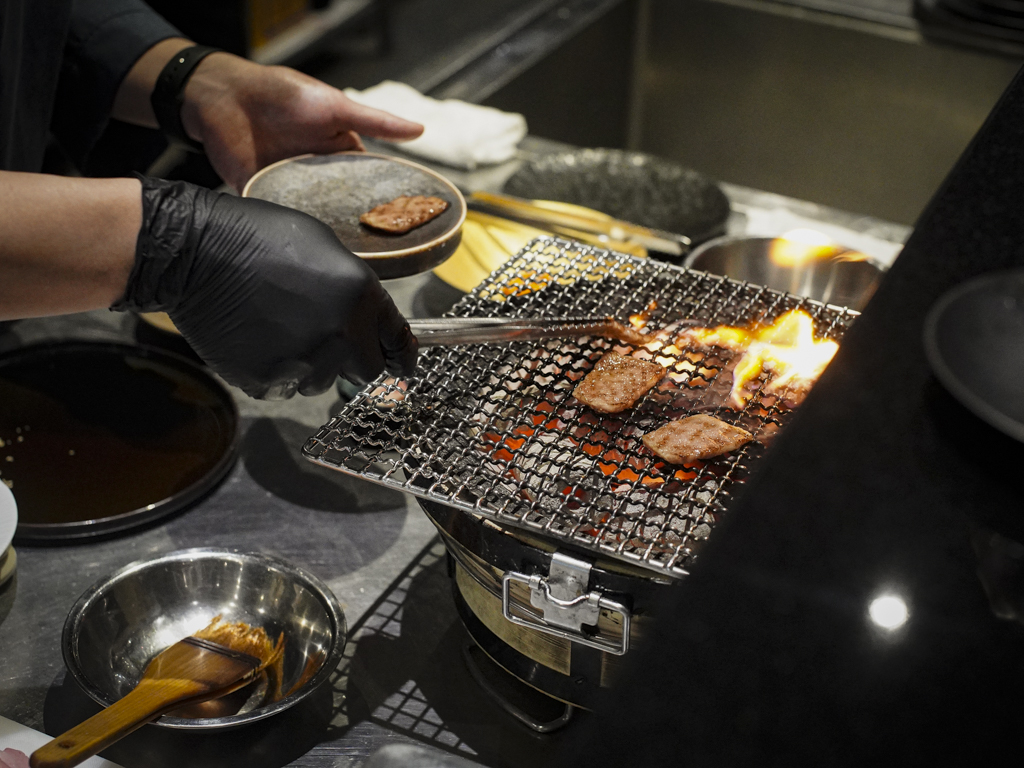
“There is a certain window where the beef tastes the best after cooking and we encourage guests to eat it as soon as it’s served.”
That said, there are always uncontrollable factors when running a restaurant. One of them is consumer habits.
“Before I opened Yen, I had never been to Singapore. So it was interesting when many of our customers asked for chilli padi out of habit,” Jones recalls, laughing.
To him, educating customers is a crucial, yet illuminating part of the journey. While he wouldn’t insist, he enjoys giving them suggestions on how to enjoy the beef in a way more akin to Japanese tradition and based on his experience.
He adds: “We enjoy explaining our meat in detail, including how to eat it, or the origin of the meat, and our guests have been receptive.”
Yakiniku taste test
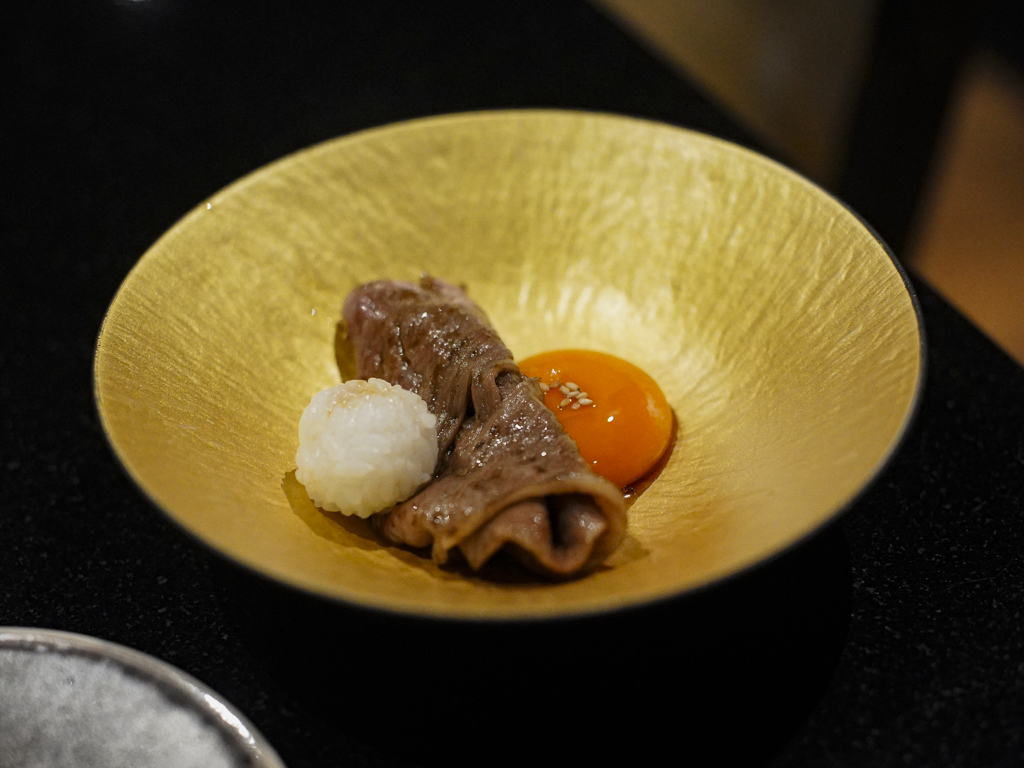
So how does all that talk about knife skills and grilling translate into the actual food?
We let Jones dazzle us with a spread of his signatures to understand what he was talking about and the off-menu yakisuki (a grilled beef dish that’s usually served with sauce and raw egg yolk, S$35) was an exceptional way to showcase all that.
The texture was perfect — it was delicate, but not too thin, and was grilled till blissfully luscious. It’s covered in a lightly sweet sauce that complements the beef’s richness, while the egg adds a wonderful silkiness to it.
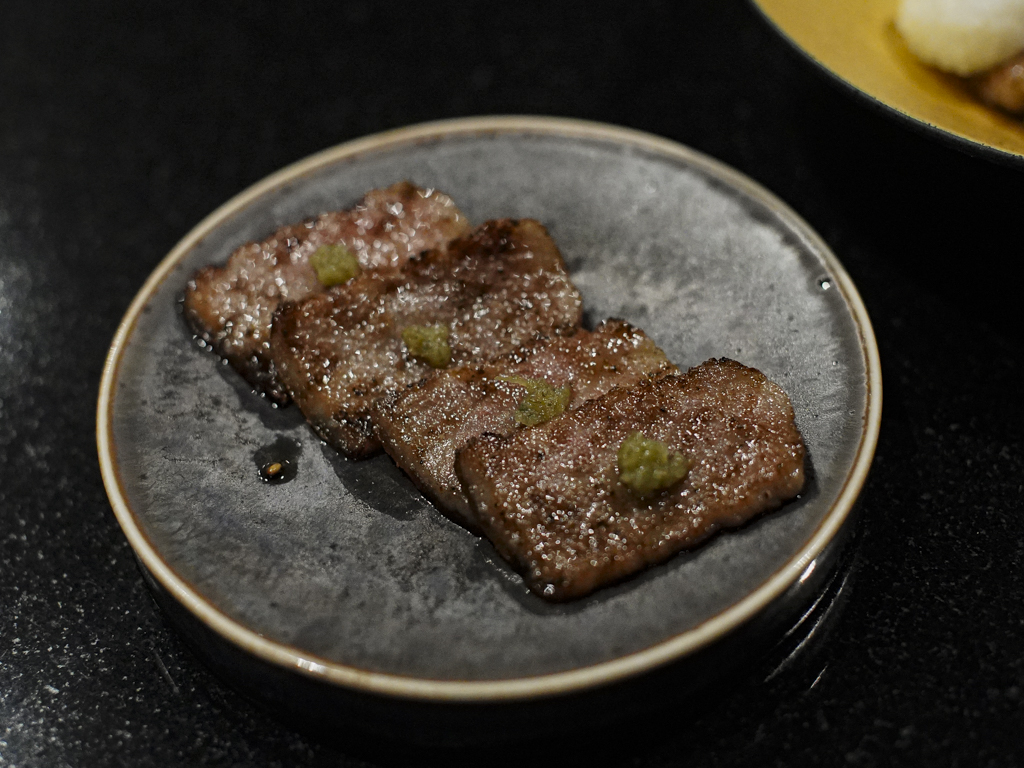
As for the Omi A5 wagyu Sankakubara (chuck ribs, from S$40 for 60g)? Another stunner, where the wagyu’s fattiness was perfectly showcased as it gently melted on the tongue, while a dollop of wasabi jazzed it up with a refreshing grassiness.
It’s exceedingly simple, but oh-so-good.
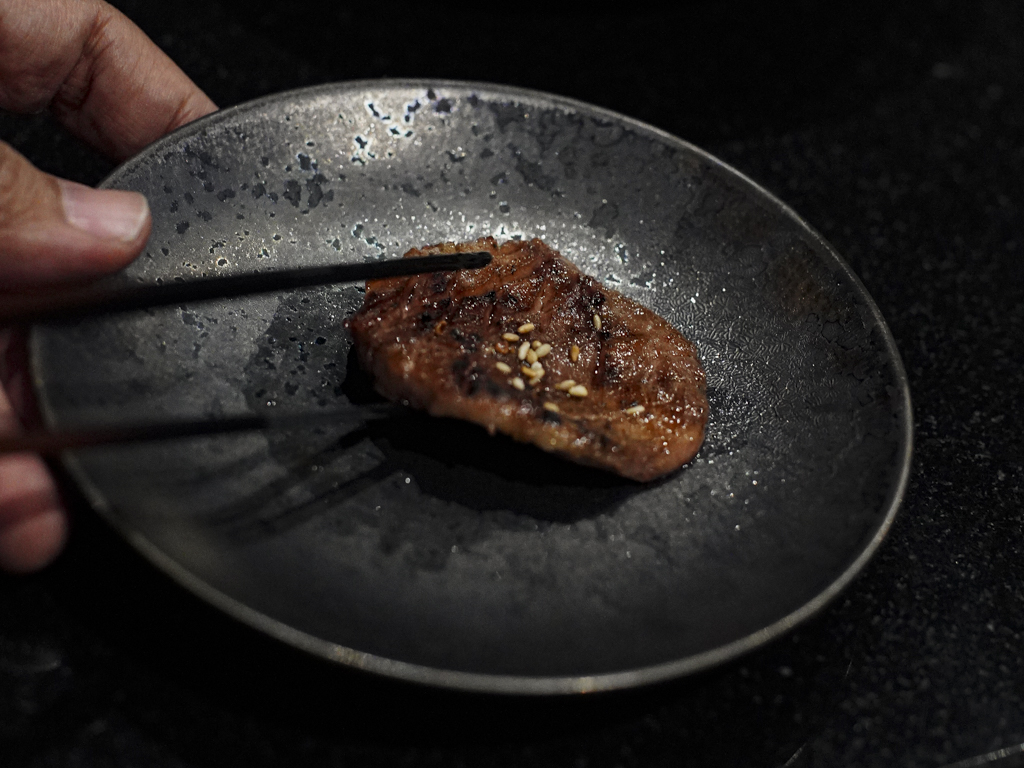
Yakiniku lovers will also be familiar with gyutan (ox tongue), which is notoriously hard to master, when it comes to achieving the right texture.
This Australia thick-cut ox tongue (S$33 per portion) is immaculately bouncy, with just the right amount of chewy bite. As good as it gets.
If you’re curious and looking to learn more about yakiniku beyond your usual karubi, Yen Yakiniku also offers an omakase (from S$188 per diner) experience — check it out and let Jones blow your mind!
Yen Yakiniku is on GrabFood 5-Star Eats
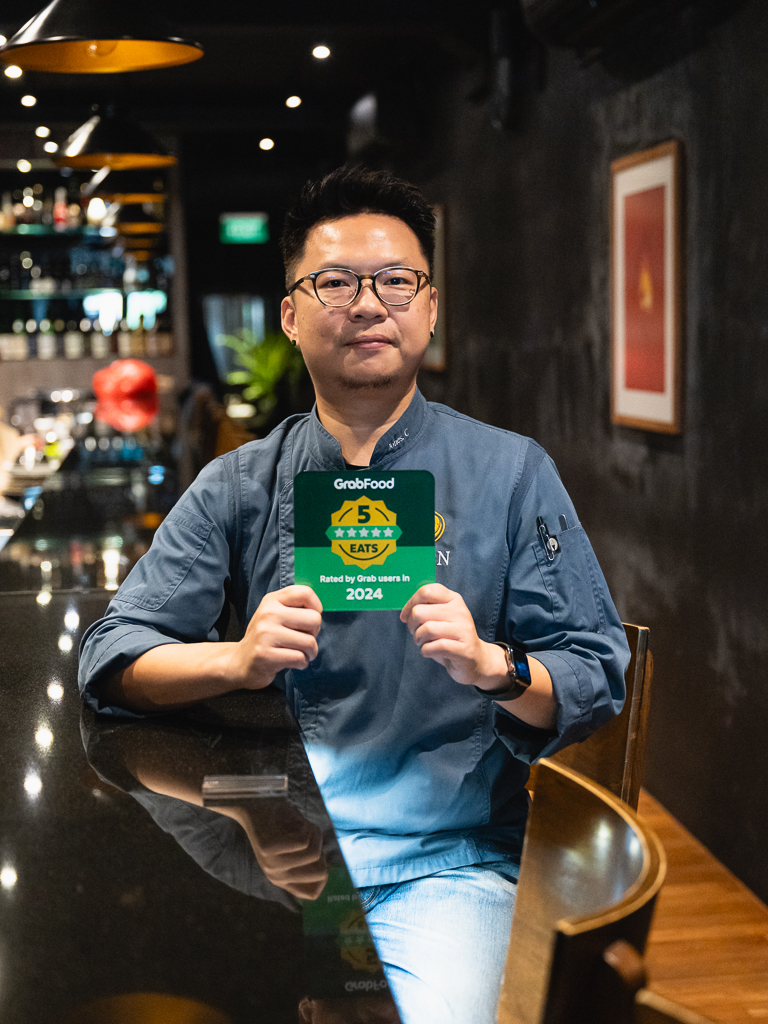
GrabFood has launched its 5-Star Eats collection, comprising top-rated stores by the Grab community, with recommendations from the Michelin Guide, HungryGoWhere and others!
Head to the Grab app to check out the list of top-rated eats, including Hajime Tonkatsu and Ramen, Imperial Treasure Super Peking Duck and River South (Hoe Nam) Prawn Noodle that you can get delivered to your doorstep.
This article was written in collaboration with GrabFood.
Find out more about the 5-Star Eats collection and check out how restaurants such as Man Man Unagi and Hajime Tonkotsu & Ramen have made their mark on our local food scene.
Do explore the new GrabFood 5-Star Eats curation to explore more quality eats on the app!
Yen Yakiniku is on the GrabFood delivery service and offers free delivery (up to S$3 off) with GrabUnlimited.
You can also book a ride to Yen Yakiniku at Ann Siang.
Yen Yakiniku
15 Ann Siang Road
Nearest MRT: Maxwell
Open: Monday to Sunday (6pm to 11 pm)
15 Ann Siang Road
Nearest MRT: Maxwell
Open: Monday to Sunday (6pm to 11 pm)
